The Pixel Prophet #13
In this edition, we explore fresh games like Antipaint and ScreenBound, plus news on Toriyama's passing and Linux malware and many more resources, art, and humor. (Yes, this summary was AI-generated)

Hello you, you wonderful people! This time the games section is slightly reduced in length as I have been struck by the Disease and am still wheezing and sneezing a little as I type these lines, so please excuse the slight dip in content and the late release.
The rest remains as you’ve come to expect it, of course: Another wild blend of Things of Interest that I hope inspires you! — Phil
You can support the Pixel Prophet at ko-fi, or donate via PayPal to ensure its sustainability. It also helps to tell others about the Prophet who share your great taste in newsletters.
News & Updates
- Akira Toriyama dies at age 68. The reclusive Japanese artist was known internationally for his Dragon Ball manga series and his character designs for the Dragon Quest (1986) series and Chrono Trigger (1995).
- Zero-day Linux malware circulated for two years. Ars Technica recently reported on the discovery of the credential stealer “NerbianRAT” by Magnet Goblin, a for-profit threat group.
- New studio founded by id Software, Naughty Dog, and Activision veterans. The name is emptyvessel and the “band of Defects” are currently looking for people to “join their squad”.
Games
Big and small, old, and new, indie and very indie
Antipaint
JUST RELEASED • Color me impressed!
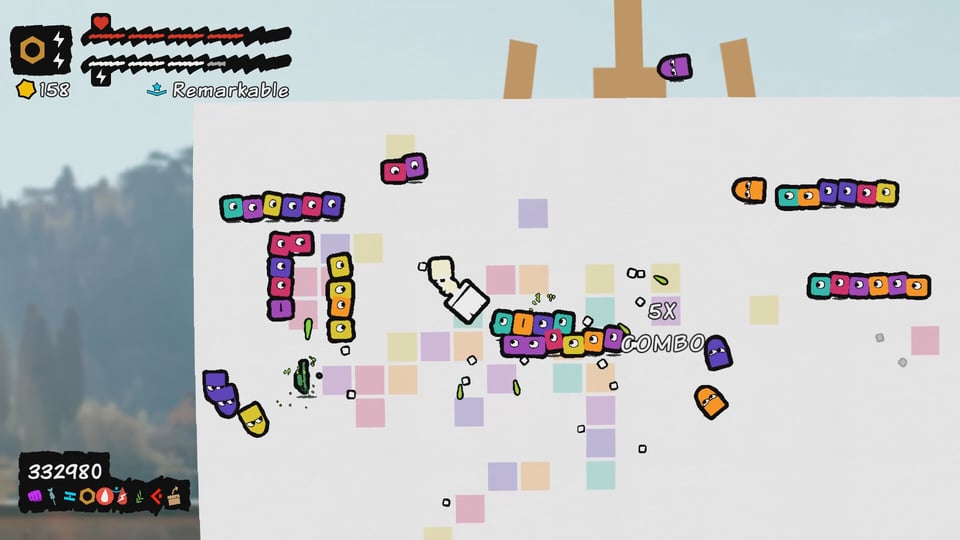
This game seems like the antithesis to the Bob Ross vibes (and yes, it might reference him in passing) I usually associate with painting. Instead of happy little trees, in ►Antipaint the canvas is a frantic battlefield for this “roguelite shooter where you battle famous works of art”. After four years of development, the game is finally complete yet developer Vilius Prakapas promises even “more things to come”. There’s a demo available too.
Might of Merchants / Canvas of Kings
IN DEVELOPMENT • Helps to Have a Map
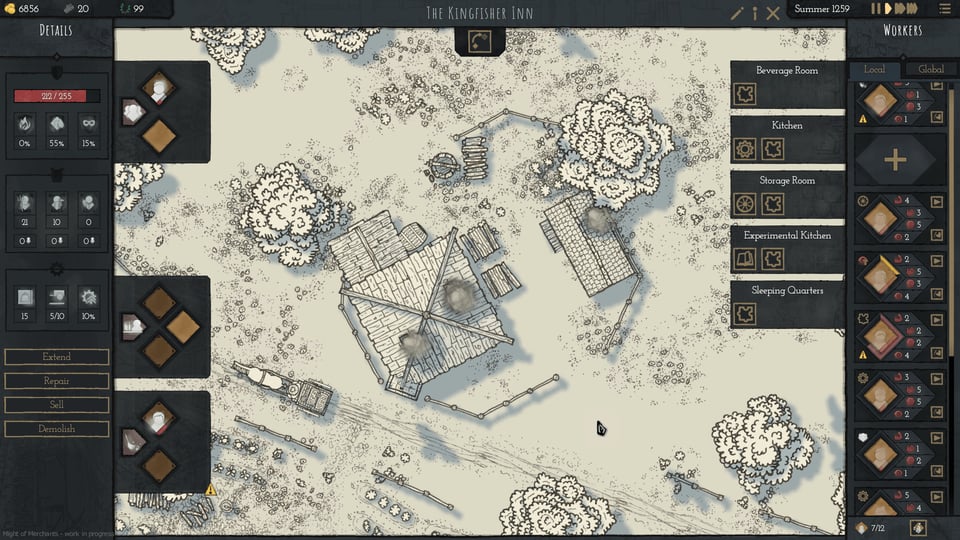
Independent solo developer and graphic designer, Hannes Breuer from Germany, is working on ►Might of Merchants that continues the trajectory that German games began with Kaiser (1984) in that it’s a detailed economy and trading simulation in a medieval kingdom with RPG elements.
What further sets Might of Merchants apart, however, is the incredibly pleasing art style, a detailed hand-drawn top-down rendering of the game world. The tech behind it is just as impressive as the view is not static, instead it is filled with animations, a lighting system, and dynamic changes to the game world. All looks as if a map in a game book had come to life.
“Gee, I wish I could have maps this pretty for my own RPG campaigns!” you might think. You’re in luck: While Might of Merchants is still in development, Hannes already published ►Canvas of Kings, a powerful and convenient map-making tool that looks like a joy to get creative with and inspired by. Both made with Godot. Good stuff!
ScreenBound
IN DEVELOPMENT • Dimensional Shift

At age 16, physicist and scientist-template Albert Einstein fancied a thought experiment, how the universe would appear if you chased a beam of light. On the very same level, I (and probably you too) wondered how a 2D side-scroller would look to the player character's point of view. Would it be a big plane or a narrow path of floating bricks?
Now after almost 40 years after Super Mario Bros (1986), ►ScreenBound has an answer for us. Yes, that links to a Reddit video of the game as it’s still early in development. In the game you play concurrently a 2D platformer on an in-game handheld console that also controls your character’s movement in the 3D rendition of the same world. It’s 5D! (2D + 3D = 5D); the video makes immediately clear what my feeble description lacks.
In my cursory research I couldn’t find much about the developer going by joshcm on Reddit and @screenbound on Twitter but I wanted to share this “game about being distracted” nonetheless.
Thunder Helix
EARLY ACCESS • Polygons of the Skies

In the early 1990s we didn’t have much: A gaming PC meant it was able to display 256 colors at 320×200 px; and a game's claim of “state of the art 3D graphics!” upsold boring wireframe models. Undeterred by the underpowered state of the art, the first “realistic looking” consumer simulators cropped up. Flight simulators such as Sphere Inc’s stellar Falcon 3.0 (1991) that asked for a beefy 386 with an additional floating point processor to impress with its polygonal splendor.
Now, ►Thunder Helix by developer David Walters looks so authentic to its 1990s inspirations, that I had to look twice to confirm that, indeed, this is brand new and not a re-release of some obscure Amiga game. Granted, the screen resolution is small and the polygon count is smaller, yet this clean angular aesthetic has been gone for so long that it feels fresh again. Also it's likely to keep a steady 60 fps on any given potato.
The gameplay looks to be varied and much more of an entertaining arcade experience than a tough-as-nails simulation that comes with its own 800-page manual.
And as an amusing coincidence, just like Hannes Breuer (see Canvas of Kings, above), also David Walters released a map editor as a standalone product on Steam, the versatile ►Grid Cartographer
SUMMERHOUSE
RELEASED • Build Your Happy Place

The beautiful and serene ►SUMMERHOUSE by artist and solo dev Friedemann Allmenröder just released on Steam and it’s already rated as “Overwhelmingly Positive” and sold 100k units. A cozy building game in the vein of Oskar Stålberg’s Townscaper (2020), SUMMERHOUSE has you build just what it says, “beautiful lived-in houses [without] rules or restrictions, just pure creativity.”
From the looks of it, every house created with it is reminiscent of a painting that could very well appear in Yoshida Seiji’s Houses With A Story.
Mars After Midnight
RELEASED • Off-World Therapist
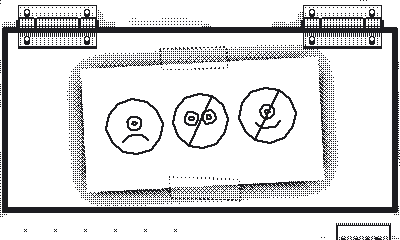
The games of Lucas Pope had me ponder totalitarianism while indulging in ever-changing cognitive exercises with Papers, Please (2013), and test my ability to deduce with the dark investigative adventure The Return of the Obra Dinn (2018). Now Lucas returned with yet another game with 1-bit visuals but exclusively for the cranky play.date handheld.
Honestly, I have no clear idea what ►Mars after Midnight is exactly, despite multiple trailer viewings. The game describes itself as “an entrant-screening, mess-tidying, session-planning, martian-filled game for Playdate” and that now clears it all up, thanks.
Whatever it is, though, it looks engrossingly weird, quirky, and hard to stick a label on. Excellent!
Programming & Game Dev
Tools, resources, wisdom, humor.
GAMES ENGINE • As simple as taking a picture — I am a strong believer that Anyone Can (And Should) Make A Game but I also know that not every prospective designer enjoys wrestling with a compiler and chanting arcane commands into the uncaring void of a terminal window.
No, newcomers to the medium need something approachable and simple that enables them to get creative right away. Enter v buckenham’s friendly and welcoming ►Downpour, an app that lets you “collage together photos, drawings and text, and then connect them into an interactive story.”
Think Twine but with pictures you take with your phone. From the looks of it, it’s something I would have loved as a kid/teen to make up interactive stories with. Here’s an example story, “Do you want to play a boardgame with me”. (via Jim Stormdancer on Mastodon)

GODOT • Metadata is your friend — Software Architect and Indie Game Dev Alfred R. Baudisch found the feature to dynamically add, read, and modify metadata in Godot helpful and ►shared his workflow on Mastodon. As always, be sure to follow the discussion in the replies.
WORLD BUILDING • Imaginary Cities — Games urbanist Konstantinos Dimopoulos published ►Ten Tips For A Better Game City an expanded version of his original Wireframe article on Medium.
Distilling something as complex as the process of imagining and creating a complete virtual city into just one piece of advice is impossible, but a selection of hints and tips can be helpful.
Mind, thought, that you need a (free) Medium account to read past the first two tips.
PROGRAMMING • Type-safe Typography — Type foundry Frere-Jones Type designed a new family of monospaced fonts “built with clarity, legibility, and the needs of developers in mind”, ►Intel One Mono. The goal was to specifically design a font for the “underserved low-vision developer audience” and you can clearly see (ha!) how well the glyphs read, especially the different kinds of brackets are much easier to distinguish.
The font is “available for free, with an open-source font license.” (Thanks to Charles Roper’s toot that introduced me to Intel One Mono)

NARRATIVE JOURNALISM • Has a Game Changed Your Life? — I think that everyone of you has a game that somehow impacted your life. Like, you wouldn’t be where you are now if you’d never seen Chrono Trigger (1995) or punched tress in Minecraft (2009) in your formative years.
In 2020, science reporter, games writer, “and overall enthusiast of just about everything”, Caroline Delbert, wrote about her friend who trained as a fire watcher after playing Campo Santo’s Firewatch (2016). But instead of a tried old wall of text, the essay titled ►Who Firewatches the Firewatchers? presents itself much like the opening vignettes of the titular game, little chucks of a narrative that draw you in, click by click.
3D GRAPHICS • Painting with Math — I thought that mentioning Graphics Programming Weekly in the previous issue would be enough to satiate even the biggest craving for graphics programming. Yet this time I stumbled over another massive resource, computer graphics professional Inigo Quilez’ ►website.
Seriously, Inigo has been exceptionally generous and there are countless articles, video tutorials, and demos on the topic of “painting with math”; all with lots of examples, illustrations, code, and –gasp– formulas!

BUG TRACKING • For Indies — Software engineer turned indie game dev, Cidney Hamilton, ►asked on Mastodon for a “good bug tracker aimed at indie game developers coordinating volunteer playtesters, that doesn't rely on Discord or Trello anything similarly enshittified.” The gold runs in the replies, people have suggested the usual suspects (GitHub, Jira) but also more obscure ones such as Bugzilla, linear.app, codecks.io, and more.
JOURNALISM • An F.A.Q. — Luke Plunkett, co-founder of the indie-pendent outlet Aftermath (as mentioned in issue 03), put up a ►helpful list of answers for newcomers to games journalism and covers topics from the basics (“How do reviews work?”) to the things you actually want to know about (“What happens when you fuck things up?”). If you are considering that career path, it’s a must-read.
RETRO TECH • Colorizing GameBoy Games — At first this sounds preposterous; I mean, how exactly can you color in old GameBoy games if not in Photoshop with the pencil tool?
But Iván Delgado, programmer and web dev from Spain, found a much better approach: Hacking the games’ ROM, of course! And Iván is kind enough to share the process in detail. Yes, that will involve assembly and an understanding of the GameBoy / GB Color’s architecture, but it’s not as hard as it may sound.
The series of well written, illustrated blog articles starts ►here. Happy hacking!
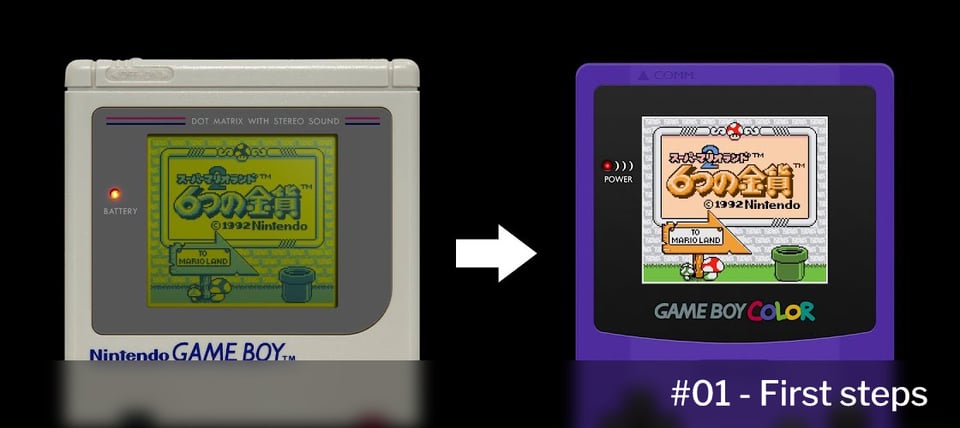
ARTICLE • Alone in the Dark — I remember well the first time I played Frédérick Raynal’s seminal survival horror, Alone in the Dark (1992). I must’ve been about 10, the four unlabeled floppies somehow found their way into my possession. I never made it past the two gargoyles (as it never occurred to me to put the mirrors on the statues) but it was this game that introduced me to H.P. Lovecraft and, in passing, instilled a lifelong fear of attics.
Last week, PC Gamer ►published Alexander Chatziioannou's long feature of the game and its legacy. And if you still hanker for more, yours truly appeared in the DOS Game Club’s podcast on that very game.
GITHUB • Keeping Track of Updates — Bernd Kilga downloads and uses a lot of open source software on GitHub and shared ►on Mastodon how just “4 simple clicks” help you make sure that you’ll get notified upon updates.
GAMING HISTORY • Mac to the Future — When I say, “remember gaming around the millenium?”, you might be thinking of classics such as Age of Empires II (1999), Deus Ex (2000), or Conker’s Bad Fur Day (2001). While popular with artists and agencies, the Macintosh had a fraction of the stuff Windows PCs and consoles enjoyed. Yet the Mac had its share of memorable games as well, easily overlooked nowadays but just as worthy of saving for the ages.
Michael Klamerus came across something as unlikely as wonderful: Lovingly crafted (official!) ►ports for modern platforms by Iliyas Jorio of forgotten Pangeasoft Macintosh games. Most of you won’t recognize any of the titles but chances are that mentioning Bugdom (1999) sends warm shivers of delight down someone's nostalgia bones. If so, be sure to show Iliyas some love on their ko-fi.
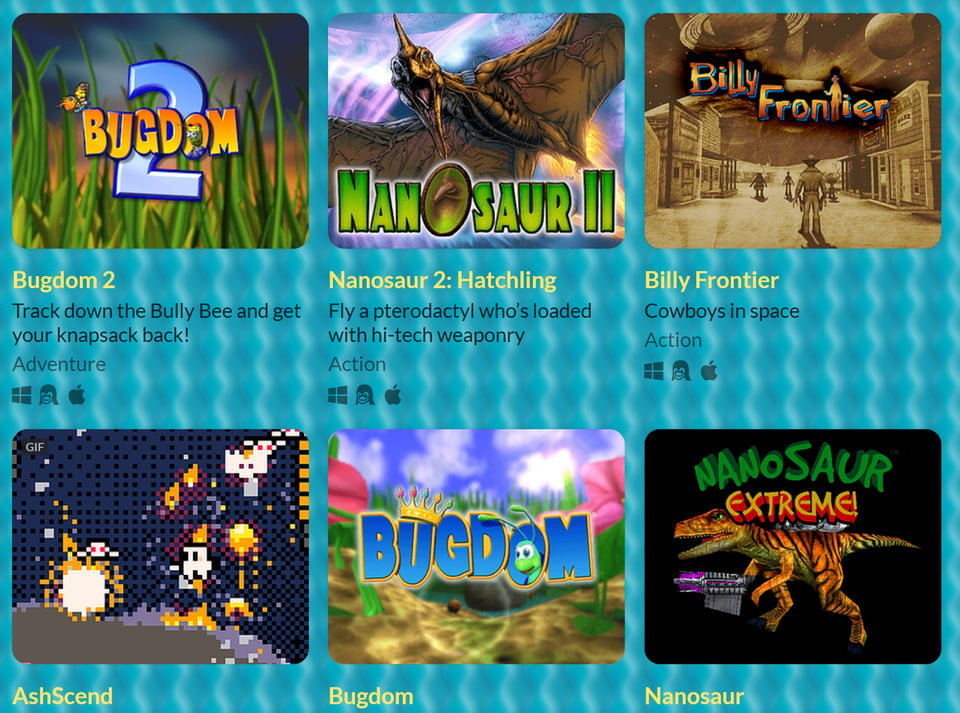
Art & Inspiration
Art, science, and other inspirations that left an impression on me

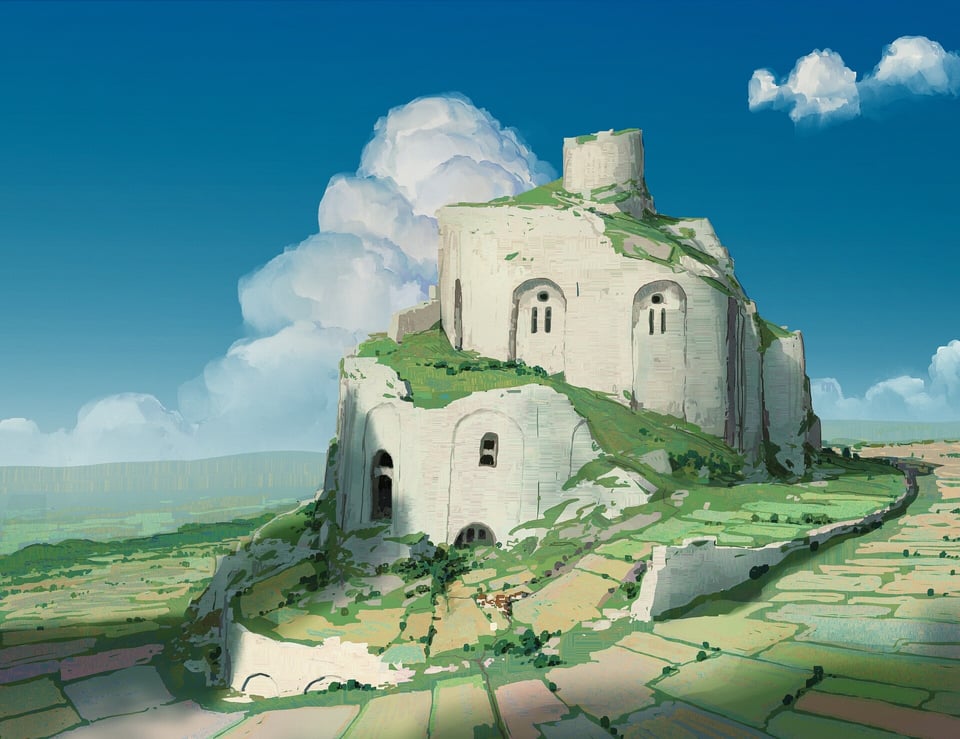
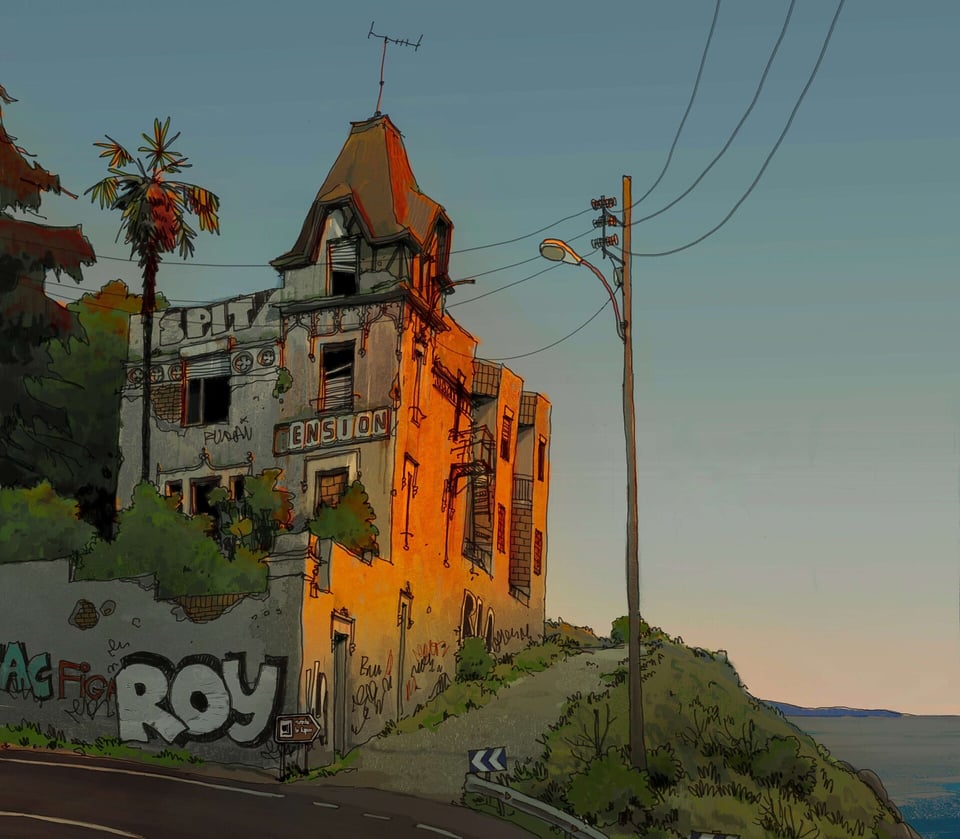
Various artworks from Alariko’s ArtStation.
There are also reasonably priced prints available!
Pixel’s Mixed Bag
What I’ve been up to
◾ I’ve been ill, (but recovering) and still managed to put out a newsletter for you, just a few days late. I'll pencil in my next infection at a slot where it's less likely to interfere with any publishing matters.
}
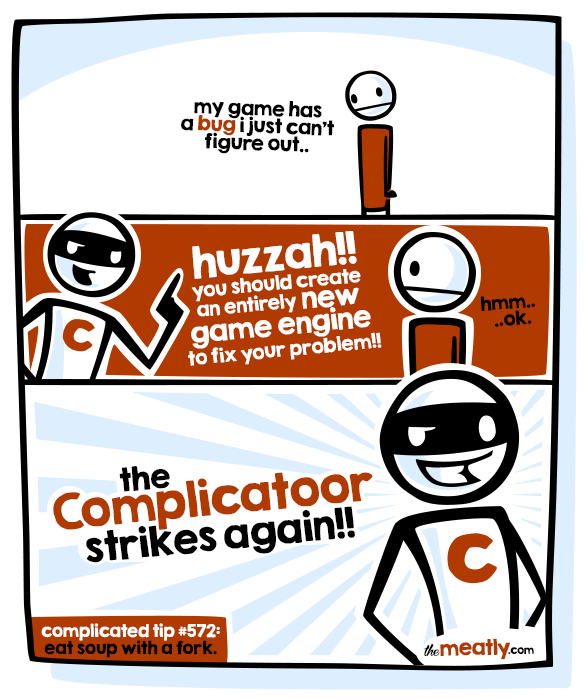
Comic by The Meatly, many more game-dev related comics on their website.
You can support the Pixel Prophet at ko-fi, or donate via PayPal to ensure its sustainability. It also helps to tell others about the Prophet who share your great taste in newsletters.
Add a comment: